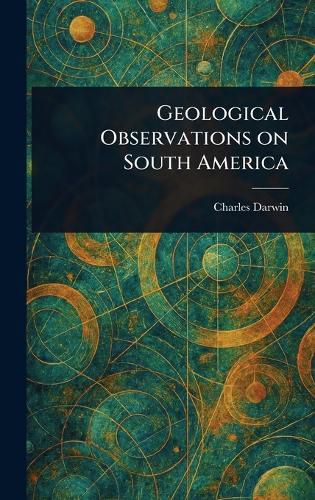Readings Newsletter
Become a Readings Member to make your shopping experience even easier.
Sign in or sign up for free!
You’re not far away from qualifying for FREE standard shipping within Australia
You’ve qualified for FREE standard shipping within Australia
The cart is loading…






This title is printed to order. This book may have been self-published. If so, we cannot guarantee the quality of the content. In the main most books will have gone through the editing process however some may not. We therefore suggest that you be aware of this before ordering this book. If in doubt check either the author or publisher’s details as we are unable to accept any returns unless they are faulty. Please contact us if you have any questions.
"Geological Observations On South America" by Charles Darwin presents a fascinating exploration of the continent's natural history. This volume, a cornerstone of geological literature, delves into the region's unique geological formations, offering detailed observations and insightful analysis. Darwin meticulously documents his findings, including examinations of fossil mollusks and other paleontological discoveries, providing a window into the earth's deep past.
Drawing on his extensive travels and research, Darwin connects geological phenomena with broader theories of natural history. This work showcases the author's keen eye for detail and his groundbreaking approach to scientific inquiry. This edition makes Darwin's seminal work accessible to those interested in geology, paleontology, and the history of science. A vital contribution to understanding South America's geological story, this book remains relevant for anyone interested in the earth sciences.
This work has been selected by scholars as being culturally important, and is part of the knowledge base of civilization as we know it.
This work is in the public domain in the United States of America, and possibly other nations. Within the United States, you may freely copy and distribute this work, as no entity (individual or corporate) has a copyright on the body of the work.
Scholars believe, and we concur, that this work is important enough to be preserved, reproduced, and made generally available to the public. We appreciate your support of the preservation process, and thank you for being an important part of keeping this knowledge alive and relevant.
$9.00 standard shipping within Australia
FREE standard shipping within Australia for orders over $100.00
Express & International shipping calculated at checkout
This title is printed to order. This book may have been self-published. If so, we cannot guarantee the quality of the content. In the main most books will have gone through the editing process however some may not. We therefore suggest that you be aware of this before ordering this book. If in doubt check either the author or publisher’s details as we are unable to accept any returns unless they are faulty. Please contact us if you have any questions.
"Geological Observations On South America" by Charles Darwin presents a fascinating exploration of the continent's natural history. This volume, a cornerstone of geological literature, delves into the region's unique geological formations, offering detailed observations and insightful analysis. Darwin meticulously documents his findings, including examinations of fossil mollusks and other paleontological discoveries, providing a window into the earth's deep past.
Drawing on his extensive travels and research, Darwin connects geological phenomena with broader theories of natural history. This work showcases the author's keen eye for detail and his groundbreaking approach to scientific inquiry. This edition makes Darwin's seminal work accessible to those interested in geology, paleontology, and the history of science. A vital contribution to understanding South America's geological story, this book remains relevant for anyone interested in the earth sciences.
This work has been selected by scholars as being culturally important, and is part of the knowledge base of civilization as we know it.
This work is in the public domain in the United States of America, and possibly other nations. Within the United States, you may freely copy and distribute this work, as no entity (individual or corporate) has a copyright on the body of the work.
Scholars believe, and we concur, that this work is important enough to be preserved, reproduced, and made generally available to the public. We appreciate your support of the preservation process, and thank you for being an important part of keeping this knowledge alive and relevant.